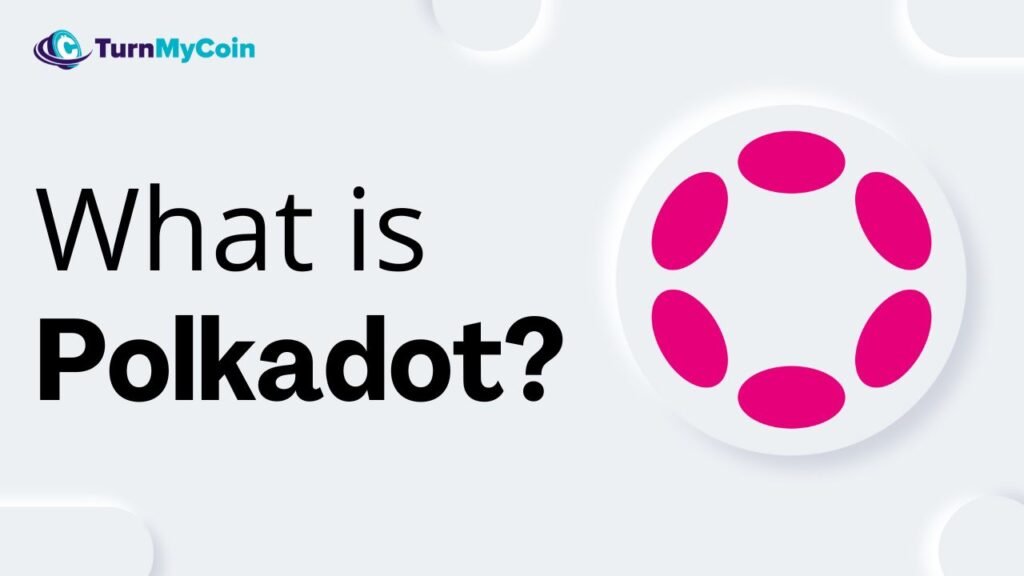Last updated on March 7th, 2023 at 11:48 am
Introduction
The Polkadot cryptocurrency project is a next-generation blockchain that seeks to support a heterogeneous multi-chain framework. It is regarded as one of the most innovative projects in the cryptocurrency space and has attracted a lot of interest from a vast community of investors, developers, and users.
The Polkadot ecosystem seeks to address many of the scalability and security issues plaguing blockchains. It is powered by the DOT, the network’s native coin. Also, it functions as a solution that simultaneously implements the technology’s unique features.
1. About Polkadot Project
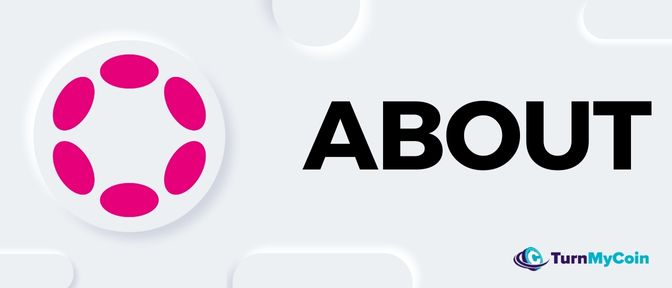
It took a few years for the project, which was first conceived in 2016, to come to fruition. It wasn’t until August 2020 that the DOT token was released onto the market. And Polkadot’s Coinbase listing in June 2021 gave it official recognition.
Decentralization, speed, and security in a trustless environment are generally considered to be the distinctive properties of blockchains, which is why Polkadot is thought to be innovative. However, while most blockchains typically only offer one or a few unique qualities, their current architecture is not designed to support all of the features simultaneously.
For example, the most used platform for DApps is Ethereum. Even so, it is currently not very scalable and has exceptionally high fees, especially when the platform is experiencing a lot of traffic. On the other hand, EOS sacrifices decentralization to secure quick, fee-free transactions.
Almost no information is exchanged between any of these networks, which are all secluded from one another. If different banks, for instance, were not permitted to communicate with one another, we would not be able to transfer money between them quickly.
Consider email. We can transfer data, for instance, from a Yahoo to a Gmail account thanks to their interoperability. Unfortunately, at the moment, blockchain technology’s widespread adoption is being hampered by a lack of interoperability. Aiming to close this gap is Polkadot.
2. What is the cryptography Polkadot network?
Simply put, Polkadot (DOT) is a blockchain with a core network called the relay chain, allowing other blockchains to connect and communicate. The relay chain hosts blockchains and manages their security and transactions, enabling cross-chain interoperability (communication between various blockchains) to run smoothly.
Polkadot enables them to communicate and exchange accurate data in addition to DOT tokens sent across blockchains.
Interoperability is the main issue Polkadot is working to solve. Blockchains should merge into a single ecosystem where data and money can be exchanged securely and scalable. Instead of existing as independent, separate entities.
Polkadot even resolves the communication between these two types of networks, even though private blockchains have somewhat different technical protocols from public ones.
To take advantage of the scalability, interoperability, and security provided, developers can quickly build new technology on top, thanks to Polkadot’s flexible and adaptive network architecture. Therefore, Polkadot’s network represents a significant advancement for programmers and business owners who want to create a brand-new blockchain from scratch.
Developers build a particular state machine and consensus algorithm when trying to develop a new blockchain, which is challenging to implement and requires a lot of time and effort. Polkadot’s core architecture aims to fix this by doing away with the need to create blockchains from scratch.
A blockchain created with Polkadot uses the Substrate modular framework, enabling users to plug in the features they need and alter them as necessary. Additionally, it allows developers to change the chain architecture, pick particular elements that meet their needs, and connect blockchains to other networks like Ethereum and Bitcoin.
3. The Polkadot network’s history
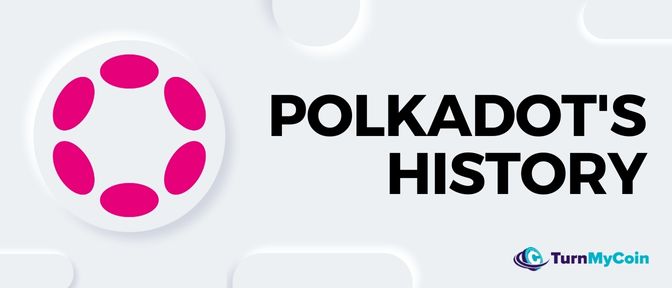
The name of the network is already distinctive: A polka. The pattern on the fabric is made up of several sizable filled circles that are all the same size. The circles most likely represent the various blockchains and the overall design of the Polkadot crypto world.
Polkadot’s history is closely related to Ethereum’s. Dr Gavin Wood, who served as Ethereum’s core developer and chief training officer, founded the company. Solidity, the language used to program smart contracts, was created by him. The lead developer of Ethereum left the project in 2016 to work on a more sharded blockchain, and in the same year, he also released the white paper for Polkadot.
Wood co-founded the EthCore Blockchain Technology Company, which eventually became Parity Technologies, while Ethereum still employed him. The business created crucial blockchain infrastructure technologies like the Polkadot network and Substrate development framework.
4. Polkadot Vs other Cryptocurrencies
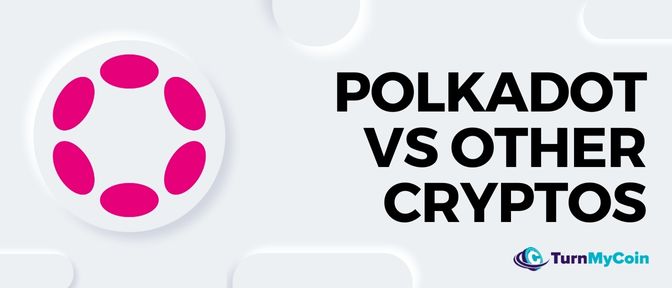
4.1 Bitcoin versus Polkadot
The functionality and objectives of the Polkadot network and Bitcoin differ somewhat. While Polkadot strives to develop into a multi-chain platform that allows interoperability between blockchains to leverage token, data, and communication exchange. Bitcoin is on its way to becoming the first global decentralized network for payments.
An organization called Polkadot is looking for a blockchain network protocol that will allow any data to be transferred between blockchains. However, a blockchain-powered new form of money and an innovative payment network are of interest to the Bitcoin industry.
The consensus algorithm and mining process are the main areas of technological distinction. Polkadot adopts a nominated proof-of-stake, similar to what we saw earlier in this guide, while Bitcoin uses proof-of-work.
4.2 Ethereum vs. Polkadot
Ethereum aims to be a blockchain for distributed finance and is a platform for smart contracts. On the other hand, Polkadot offers a framework for quickly creating customized blockchains as well as the capacity to connect various networks.
Both platforms are made for programmers who want to create decentralized applications and both aim to solve scalability issues through parallelized execution. But Polkadot uses parachains and parathreads to do it, while Ethereum uses shards to try to do it.
From a technical standpoint, Ethereum is currently powered by a proof-of-stake system, which is probably distinct from Polkadot’s NPoS.
4.3 Polkadot versus Cardano.
Cardano and Polkadot were created to address some of Ethereum’s inherent limitations. They were both developed by well-known Ethereum contributors, so they both have a history with Ethereum.
A third-generation blockchain platform with a DApp development focus is called Cardano (ADA). It is the first blockchain proof-of-stake platform to be built using evidence-based techniques and peer-reviewed research as the foundation. It combines cutting-edge technologies to give decentralized applications, systems, and societies sustainability and security.
Contrarily, Polkadot is a multi-chain application ecosystem, blockchain, and cryptocurrency, as we have already discovered. The network’s main objective is to support the creation of next-generation DApps, and it was built to facilitate cross-chain interoperability.
5. How Does Polkadot Operate?
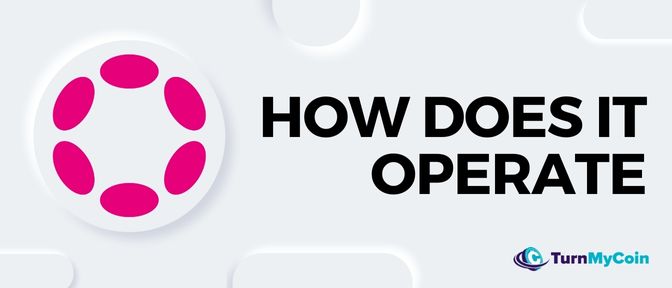
Polkadot is referred to as a “heterogeneous multichain system” by Bitwise Asset Management’s director of research, David Lawant.
That’s just a fancy way of saying that there are various Polkadot-based blockchains in operation.
Layer 0 blockchains serve as the fundamental layer that layer 1 blockchains are built upon, as was mentioned above. Programmers can create their own blockchains with cross-chain interoperability using the built-in infrastructure provided by Polkadot.
Programmers can create decentralized applications (DApps), smart contracts, non-fungible tokens (NFTs), and more on layer 1 blockchains like the Ethereum project that Wood founded with co-founder Vitaly Dmitriyevich “Vitalik” Buterin and others.
But creating a Layer 1 blockchain is challenging for programmers. Bill Birmingham, chief investment officer at Osprey Funds, claims they must first create the foundation before they can even begin offering incentives to hundreds of people to run their Layer 1 program on a computer.
Polkadot, according to experts, has a foundation already built. Therefore, all that is required of the Layer 1 programmer is that they concentrate on improving their own project.
Most of these Layer 1 systems are siloed, according to Thibault Perréard, head of finance at cross-chain staking hub Bifrost. The interactions between them are minimal. As the “internet of blockchains,” Polkadot aims to enable communication between any public or private blockchain. “.
6. Token native to Polkadot: DOT
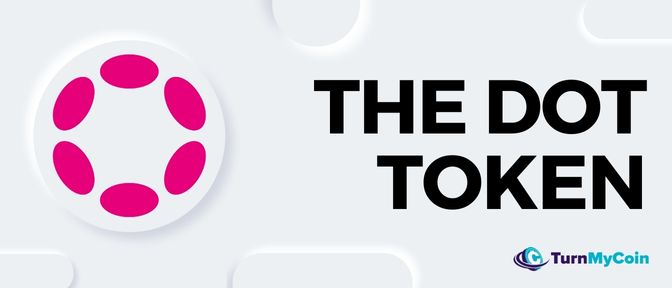
Proof-of-stake validation, cross-chain interactions, and base layer programming all depend on DOT. Polkadot’s native token, which is the glue that holds everything together.
In order to approve the subsequent block in Polkadot’s blockchain, validators stake or put up DOT as collateral. DOT serves as Polkadot’s proof-of-stake mechanism in this manner.
A parallel chain or parachain is the term used within the system to describe each individual blockchain created using Polkadot.
Security is of the utmost importance when transferring data across these parachains. With just one underlying chain known as the relay chain, Polkadot makes this security possible.
According to Lawant, this relay chain is what sets Polkadot apart from its closest rival, Cosmos (ATOM). It is the main chain of Polkadot.
In fact, Perréard notes that “the relay chain ensures security. He claims that the parachains can “leverage off the structure and foundation of Polkadot. They don’t have to worry about providing security, in other words.
Blocks on Polkadot’s relay chain are validated using the DOT token. However, within the Polkadot system, DOT is not only used for staking. The token is also employed for bonding and governance. The ability to vote on network governance issues like upgrades and network charges is granted to all DOT holders.
7. Polkadot financial investment
A simple-to-use crypto asset is polkadot. DOT can be purchased on the majority of the major cryptocurrency exchanges in the world for developers interested in bidding on a Polkadot parachain or investors looking to buy tokens for speculation. Example:
DOT tokens can be stored in a cryptocurrency wallet. Both offline (cold wallet like Ledger) and online (hot wallet like MetaMask) cryptographic wallets are accessible. There are greater security risks with online wallets. Additionally, make sure that the crypto wallet accepts Polkadot tokens.
Polkadot, like all cryptocurrencies, is a very speculative and risky investment, so investors should keep that in mind.
It is recommended that you take the advice of a financial advisor considering buying DOT tokens or any other crypto for that matter. Given the erratic nature of cryptocurrencies, you should never invest more money than you can afford to lose.
8. Future of Polkadot
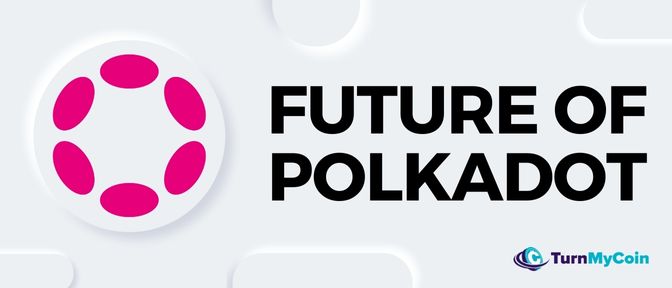
It seems like Polkadot’s development will be fascinating to follow given the overall advantages for business owners, developers, users, and investors.
It is obvious that the project wants to encourage usage by rewarding participants. This is because DOT serves as the protocol’s governance token and is used for staking to secure the network or bond new chains. With an average yield of 10% annually, staking DOTs has in fact grown to be one of the most valuable incentives in the cryptocurrency world.
A promising scenario for the project is made possible by the platform’s strong network and commitment to its roadmap. Polkadot is one of the most brilliant technological and commercial innovations in the blockchain sector, and the coming months will be crucial in determining the network’s true potential.
